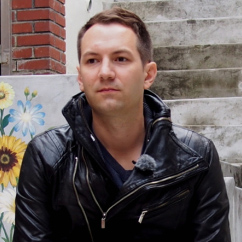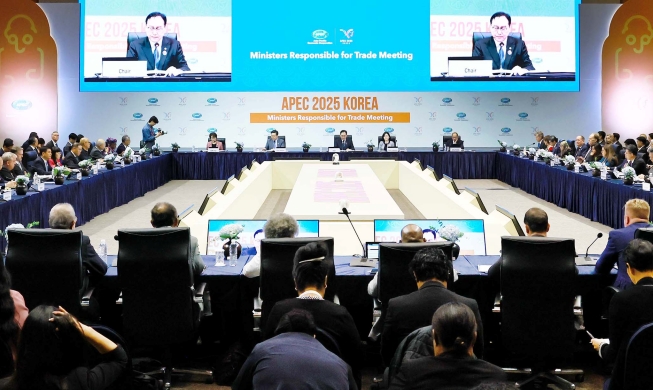View this article in another language
- 한국어
- English
- 日本語
- 中文
- العربية
- Español
- Français
- Deutsch
- Pусский
- Tiếng Việt
- Indonesian
A pair of museums in one of Seoul’s most overlooked neighborhoods pay tribute to two of Korean history’s major figures.

By Charles Usher
If you asked people to pick out the blandest part of Seoul, many of them would probably draw a thick red circle south of the Han River, west of the Anyang Stream and east of Gimpo Airport. Surrounded by that transportation hub, Yeouido’s economic engines, the pleasant affluence of the Mokdong neighborhood, and, across the river, World Cup Stadium and Park, the area along this stretch of the subway’s Line 9 sort of disappears. Not many people bother to go there, and common perceptions paint it as just a collection of middle-class apartment towers and schools.
There’s truth to that description. A lot of it, in fact, but it’s not quite definitive. While the area that now makes up the Gangseo District doesn’t come up much in conversations about Korea’s history, it’s not without importance in that regard. A couple of good museums there, both completely off the tourist track, pay tribute to two of the area’s, and the country’s, totemic figures – one a doctor, the other an artist – making the neighborhood worth a visit and revealing a part of town much less bland than it first appears.
A good part of the neighborhood just northwest of Gayang Station is dedicated to the area’s favorite son, Heo Jun, the father of Korean medicine. Heo was born here in the latter half of the 16th century and went on to enter Naeuiwon (내의원), the medical center for the royal family. He found great favor among the Joseon rulers after curing a prince’s case of smallpox, eventually becoming the king’s chief physician. Such close proximity to power isn’t without its risks, and when King Seonjo died in 1608, Heo was made a scapegoat and exiled from the capital (though only back to the area near Gayang, which was not then part of the capital). But in the good doctor’s charmed life, this too turned out to be a blessing in disguise, for it was during his period of exile that Heo found the time to make his greatest contribution to medicine, writing Donguibogam. The 25-volume text covered everything from internal medicine to acupuncture to herbal remedies and had a major influence on how medicine was practiced in China and Japan. In 2009 it was listed on UNESCO’s Memory of the World Register, a first for a book about health and medical care. Now, in addition to a Heo Jun Theme Street (허준테마거리), where several monuments commemorate the doctor, there’s also the informative Heo Jun Museum (허준박물관). The latter tells not only Heo’s personal story, but also has displays on how medicine was practiced in his time.
Just a few hundred meters west is the Gyeomjae Jeongseon Memorial Museum (겸재정선기념관), an elegant glass building dedicated to Jeong Seon (1676–1759). Jeong, whose pen name, Gyeomjae, means ‘humble study,’ was born into a noble family in a neighborhood north of the river – between Bugak and Inwang Mountains – that was the center of Korean literary culture in the late 17th century. As an adult he held government posts, including in the Yangcheon district, where the museum is located. However, Jeong is far more famous for his artistic work, in particular for departing from the traditional Chinese styles that dominated Korean art and developing what’s called ‘true-view landscape painting.’
Virtually all of the paintings on display at the museum are reproductions (most of the originals are at the National Museum), but that doesn’t prevent one from admiring their graceful, austere beauty, their color palette often limited to a striking, near monochromatic range of carbon blues and grays. There are also interesting touches like a fascinating interactive feature that displays Jeong’s paintings of different spots in Seoul, showing where in the city they are set, and comparing them to photos of the present-day location.
Even if you’ve never heard of Jeong Seon before, if you’ve been to Korea you’ve seen his artwork, whether you know it or not. If you’ve got some Korean cash on you, pull out a thousand-won bill and flip it over. There on the back is Jeong’s painting ‘Living Quietly, Settled Near Where the Brook Flows.’ On the right side there’s a little house tucked between pine trees on a bend in the river near the old village of Andong. If you look closely you’ll see a figure seated inside. That’s Toegye Yi Hwang, a famed Confucian scholar, and the man whose sagacious visage graces the note’s front.

By Charles Usher
If you asked people to pick out the blandest part of Seoul, many of them would probably draw a thick red circle south of the Han River, west of the Anyang Stream and east of Gimpo Airport. Surrounded by that transportation hub, Yeouido’s economic engines, the pleasant affluence of the Mokdong neighborhood, and, across the river, World Cup Stadium and Park, the area along this stretch of the subway’s Line 9 sort of disappears. Not many people bother to go there, and common perceptions paint it as just a collection of middle-class apartment towers and schools.
There’s truth to that description. A lot of it, in fact, but it’s not quite definitive. While the area that now makes up the Gangseo District doesn’t come up much in conversations about Korea’s history, it’s not without importance in that regard. A couple of good museums there, both completely off the tourist track, pay tribute to two of the area’s, and the country’s, totemic figures – one a doctor, the other an artist – making the neighborhood worth a visit and revealing a part of town much less bland than it first appears.
A good part of the neighborhood just northwest of Gayang Station is dedicated to the area’s favorite son, Heo Jun, the father of Korean medicine. Heo was born here in the latter half of the 16th century and went on to enter Naeuiwon (내의원), the medical center for the royal family. He found great favor among the Joseon rulers after curing a prince’s case of smallpox, eventually becoming the king’s chief physician. Such close proximity to power isn’t without its risks, and when King Seonjo died in 1608, Heo was made a scapegoat and exiled from the capital (though only back to the area near Gayang, which was not then part of the capital). But in the good doctor’s charmed life, this too turned out to be a blessing in disguise, for it was during his period of exile that Heo found the time to make his greatest contribution to medicine, writing Donguibogam. The 25-volume text covered everything from internal medicine to acupuncture to herbal remedies and had a major influence on how medicine was practiced in China and Japan. In 2009 it was listed on UNESCO’s Memory of the World Register, a first for a book about health and medical care. Now, in addition to a Heo Jun Theme Street (허준테마거리), where several monuments commemorate the doctor, there’s also the informative Heo Jun Museum (허준박물관). The latter tells not only Heo’s personal story, but also has displays on how medicine was practiced in his time.
Just a few hundred meters west is the Gyeomjae Jeongseon Memorial Museum (겸재정선기념관), an elegant glass building dedicated to Jeong Seon (1676–1759). Jeong, whose pen name, Gyeomjae, means ‘humble study,’ was born into a noble family in a neighborhood north of the river – between Bugak and Inwang Mountains – that was the center of Korean literary culture in the late 17th century. As an adult he held government posts, including in the Yangcheon district, where the museum is located. However, Jeong is far more famous for his artistic work, in particular for departing from the traditional Chinese styles that dominated Korean art and developing what’s called ‘true-view landscape painting.’
Virtually all of the paintings on display at the museum are reproductions (most of the originals are at the National Museum), but that doesn’t prevent one from admiring their graceful, austere beauty, their color palette often limited to a striking, near monochromatic range of carbon blues and grays. There are also interesting touches like a fascinating interactive feature that displays Jeong’s paintings of different spots in Seoul, showing where in the city they are set, and comparing them to photos of the present-day location.
Even if you’ve never heard of Jeong Seon before, if you’ve been to Korea you’ve seen his artwork, whether you know it or not. If you’ve got some Korean cash on you, pull out a thousand-won bill and flip it over. There on the back is Jeong’s painting ‘Living Quietly, Settled Near Where the Brook Flows.’ On the right side there’s a little house tucked between pine trees on a bend in the river near the old village of Andong. If you look closely you’ll see a figure seated inside. That’s Toegye Yi Hwang, a famed Confucian scholar, and the man whose sagacious visage graces the note’s front.
